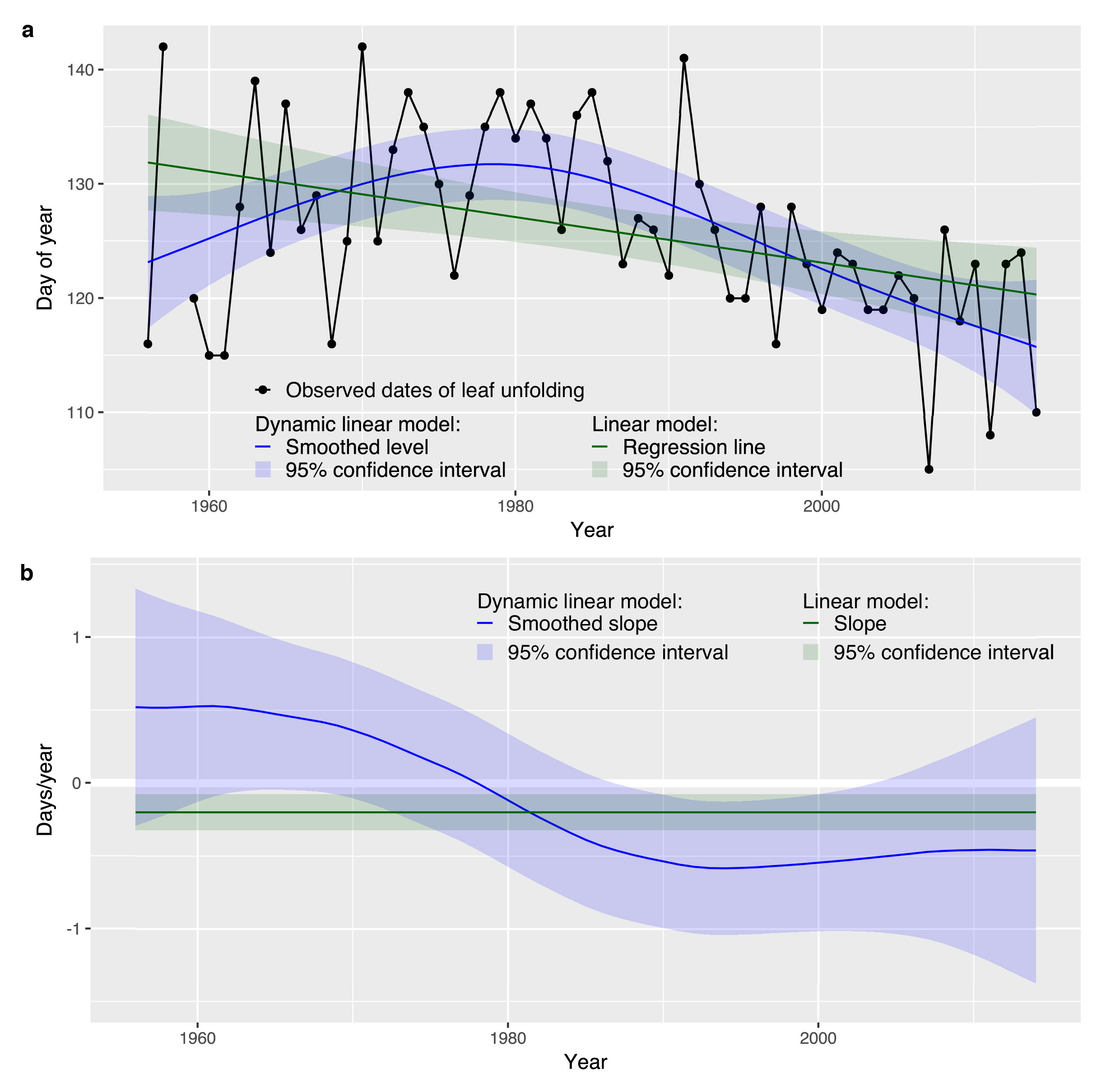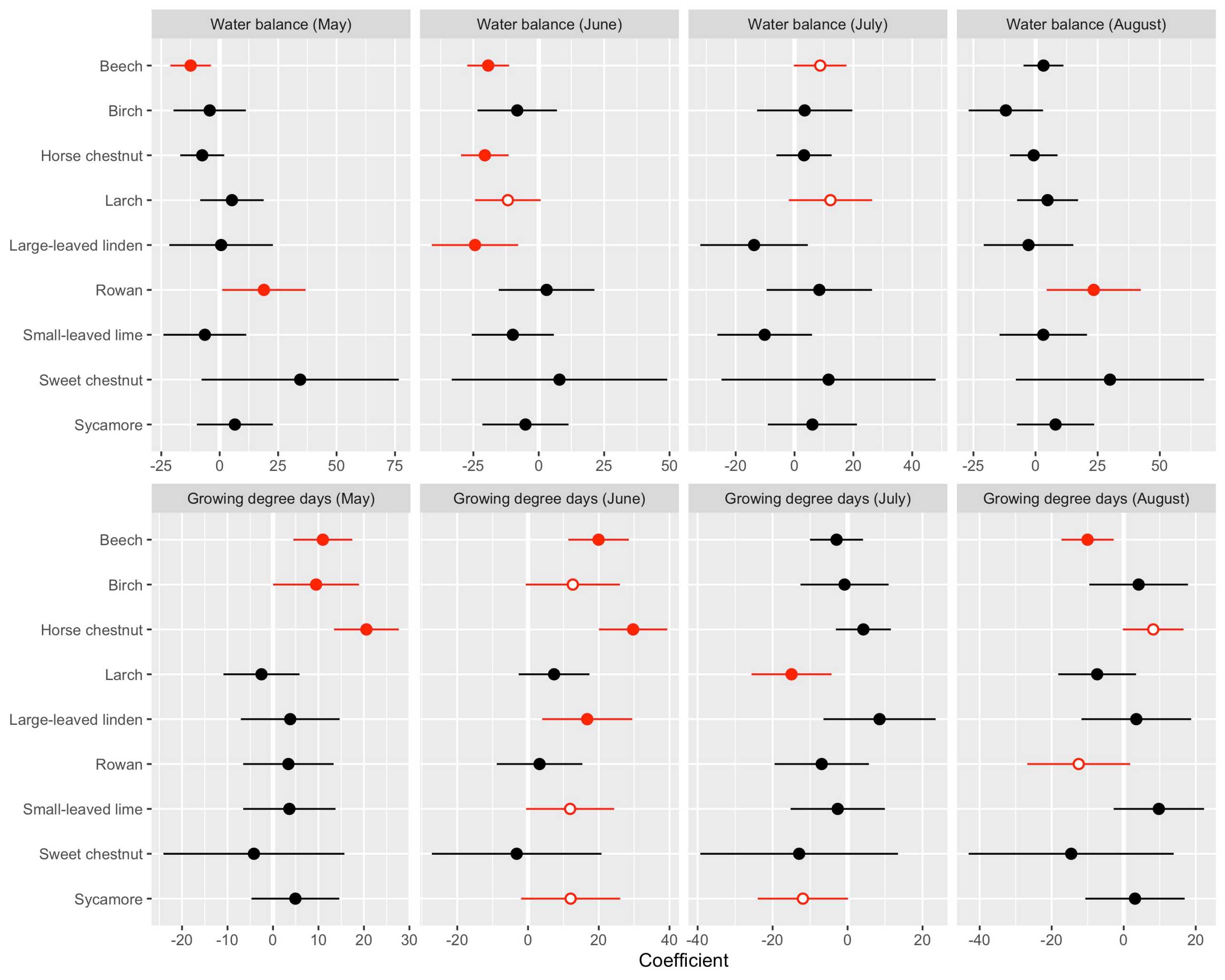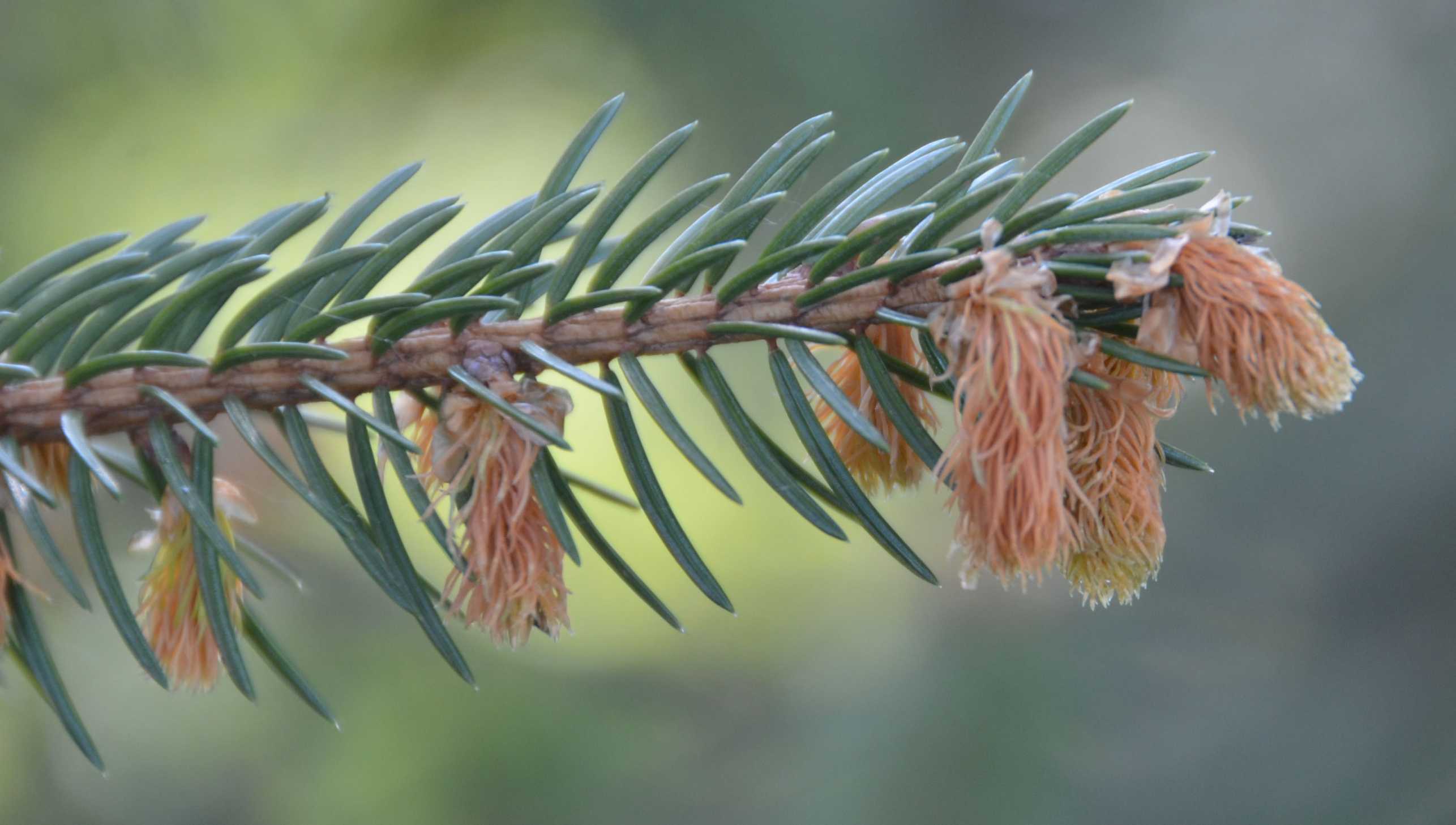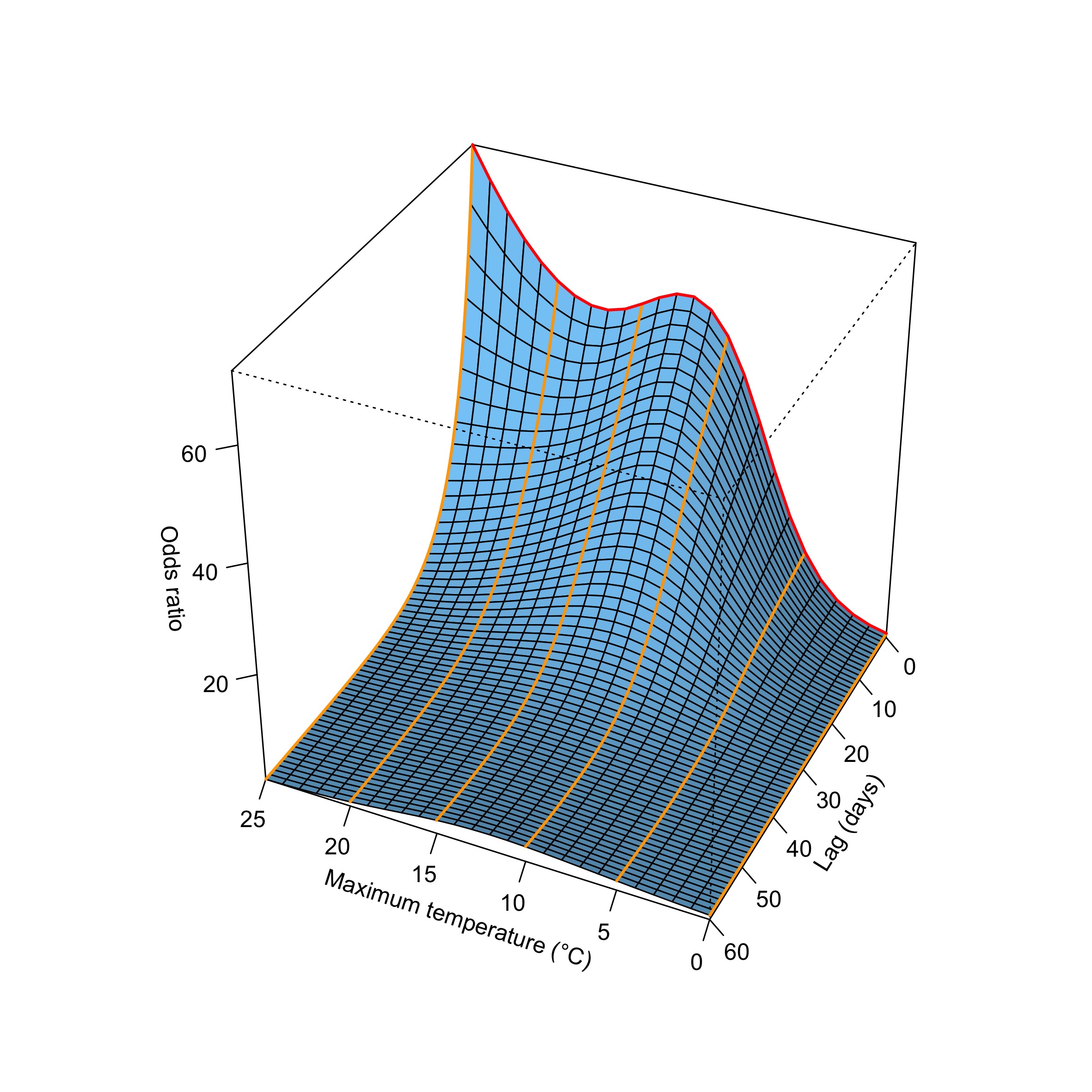Climate influences on the phenology of tree and shrub species
In this project phenological observations of various tree and shrub species in Switzerland are investigated, that have been recorded by MeteoSwiss since 1951. The ca. 200’000 observations cover various phenophases such as leaf unfolding/needle appearance, flowering, fruit ripening, leaf/needle coloring, and leaf/needle fall.
In the first part of the project, we investigated whether the frost risk during leaf unfolding and needle appearance, respectively, of 13 tree and shrub species has changed from 1951 to 2014 (Fig. 1). A total of 48'000 observations at 264 stations from the phenological network of MeteoSwiss were investigated. To assess whether the trends of leaf unfolding and frost risk change, "state-space models" were used (Fig. 2). All investigated species show increasingly earlier dates of leaf unfolding, particularly above 800 m a.s.l. and since the 1980s, which may be attributed to the higher spring temperatures. Currently, trees and shrubs have a relatively large safety margin between the last critical frost and the timing of leaf unfolding. However, frost risk increases in early-leafing species (e.g. larch, horse chestnut, hazel, silver birch, rowan) and with increasing elevation. The frost risk tended to decrease during the cool 1950s and 1960s, while it has been increasing since the 2000s due to climate warming.
The study has been published as external page Bigler and Bugmann (2018).

In the second part of the project, we investigated how daily weather influences affect leaf unfolding and needle appearance, respectively, of five deciduous and conifer species (larch, horse chestnut, hazel, beech, Norway spruce). Since daily weather influences such as the maximum temperature have an impact over several weeks and months, we quantified the relationship between weather influences and leaf unfolding using "distributed lag models" (Fig. 3).
The study was published as external page Bigler and Vitasse (2019).
In the third part of the project, we investigate under which climatic conditions exceptionally early leaf discoloration of trees occurs. We analyze 16385 observations of leaf discoloration of beech, birch, horse chestnut, larch, large-leaved linden, rowan, small-leaved lime, sweet chestnut and sycamore at 222 phenological stations in Switzerland. In years with exceptionally early leaf discoloration, the growing-degree days in May and June were significantly higher and the climatic water balance in June was significantly lower than in the other years, particularly for drought-sensitive species such as beech (Fig. 4). Also very low minimum temperatures in September caused exceptionally early leaf discoloration.
external page The study was published as Bigler and Vitasse (2021).

Funding
ETH Zurich
Status of the project
The project started in February 2015.
Contact
Please contact Christof Bigler for more information.





